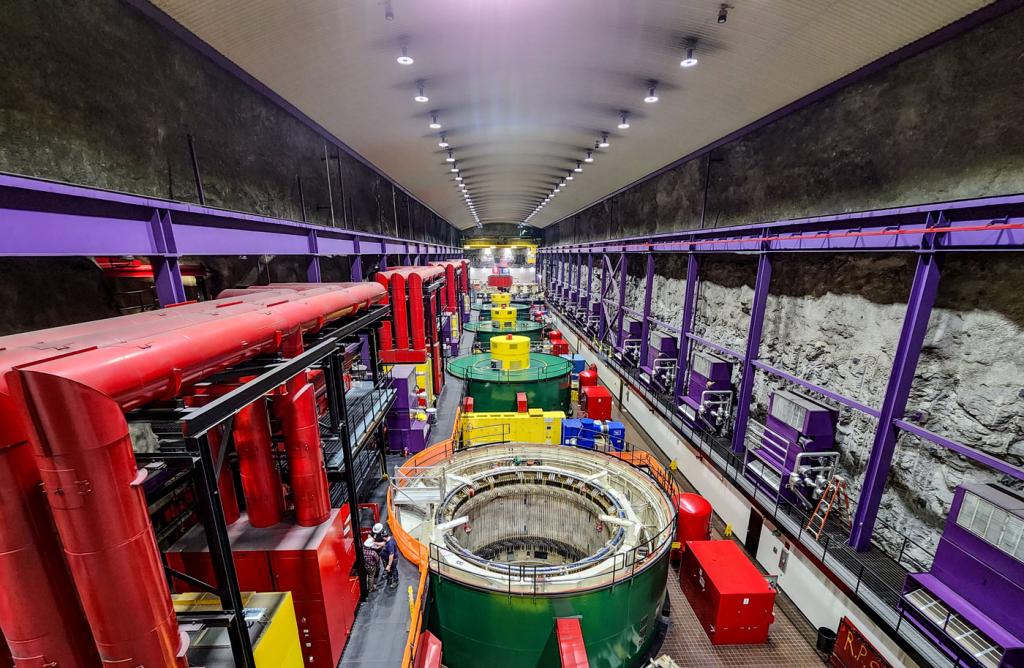Project Details

Overview/Objective
Adoption of intermittent energy resources such as wind and solar power has left US power grid operators with a challenge. These resources currently provide little to no grid inertia, which keeps the system in balance between power generation and demand. Scientists from Oak Ridge National Laboratory and the University of Tennessee, Knoxville, have come up with a solution: using signals from pumped storage hydropower projects to monitor grid inertia.
Inertia is the kinetic energy provided by the spinning parts of large power plants that maintains the grid’s balance between the push of power supply and the pull of power demand. Generation sources like solar and wind currently provide little to no inertia since they are connected to the grid using technologies like inverters that covert the DC power generated by intermittent energy resources to the AC power used to transmit electricity over long distances.
The result is that grids reliant on inverter-connected energy have less tolerance to abrupt change such as storm damage or unusual demand peaks.
Hydropower is an energy source directly connected to the grid, providing inertia as water spins large turbines. Pumped storage hydropower, or PSH, draws electricity from the grid to pump water from a lower to an upper reservoir in times of low power demand to create an energy storage bank. Then in times of high demand the projects generate electricity as water is routed back to the lower reservoir through the turbines.
When those pumps shut down, they always stop at a fixed power level, providing a very defined signal on the grid that can help operators calculate overall inertia.
Results
ORNL and UTK colleagues created a new algorithm that captures the PSH signal and uses it along with other information gathered from unique, low-cost grid sensors deployed across the country. That sensing and measurement system, FNET/GridEye, monitors the grid across the nation. Together, the result is a real-time, highly accurate estimation of grid inertia.
The researchers created a visualization tool that makes it easy for grid operators to monitor inertia and better prepare for potential grid instability. The new method was validated with the help of utilities and power regulating authorities in the western and eastern United States where pumped storage hydropower is most prevalent.
The visualization tool is being demonstrated to utilities and grid coordinating authorities such as the North American Electric Reliability Corporation.
The project was supported by the Department of Energy Office of Energy Efficiency & Renewable Energy’s Water Power Technologies Office as part of its HydroWIRES initiative to leverage hydropower for greater grid reliability and resilience. FNET/GridEye was developed with support from DOE’s Office of Electricity.
Impact
The ultimate goal of this monitoring system is to provide a tool to grid operators and reliability coordinators to monitor real-time inertia in order to predict and avoid potential outages as the grid incorporates new, intermittent energy sources. Pumped storage hydropower thus provides a dual benefit. It provides inertia itself from spinning turbines as it generates electricity, and the signals it produces during operations can help grid operators monitor grid stability.
The inertia estimation visualization tool is being disseminated via conference presentations and outreach to industry.


